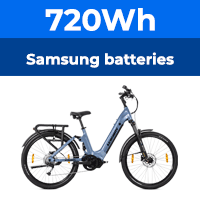You are joining the battery fire hype I'm afraid, and fanning the flames.
The actual recorded number of bike/scooter battery fires in the UK last year was 211
Source:
https://www.gov.uk/government/publications/fires-in-e-bikes-and-e-scooters/fires-in-e-bikes-and-e-scooters-2024
The number of fires in general in the UK in 2024 was 133,072.
One fire in every 630 in the UK last year was caused by an e-bike or e-scooter.
The Bike Association claims that there are 550,000 e-bikes in use in the UK, so one bike in every 2606 caught fire, and you can bet that fast charging or fast discharging was a major contributor to those fires.
By comparison, with 41.2 million road vehicles and 100,000 vehicle fires per year, the ratio for road vehicles generally is one fire in 412.
What explosion of lithium battery fires?
This whole mythology about lethal ebikes is a got up exaggeration put about by the trash media and people blabbing on the Internet.
If you ill-treat a lithium battery it might catch fire and burn your house down. Every home is filled with other stuff that will do the same if treated badly. nevertheless, we are left with the fact that only one fire in 630 was caused by an e-bike or scooter in 2024.
The fact that ebike fires are increasing in percentage terms is a feature of much greater numbers of them being in circulation. In absolute terms the numbers of new fires is small. A percentage rise of a small number is still a small number. Too many people writing for the media have no grasp of basic statistical concepts.
This is quite an interesting page:


